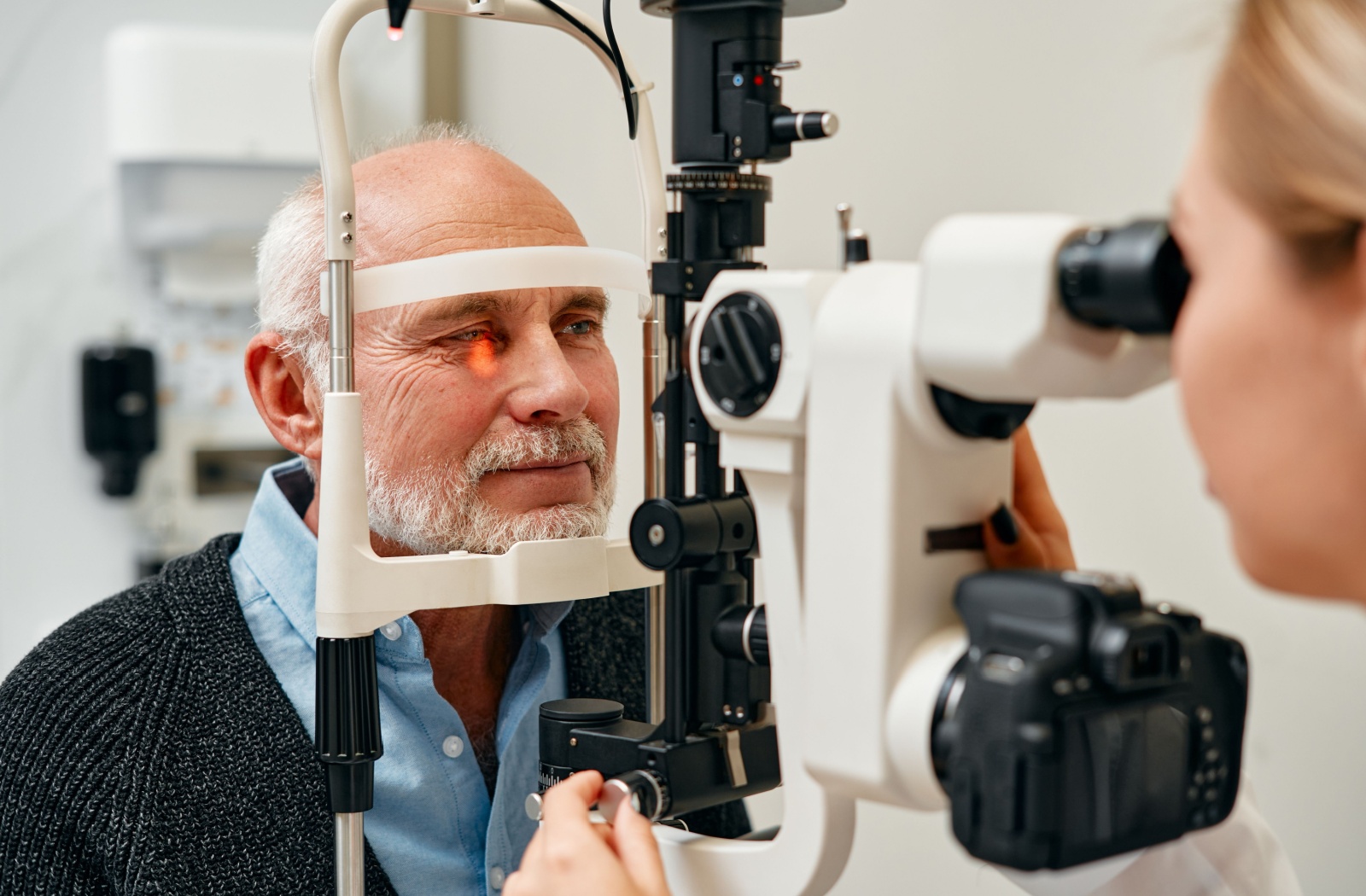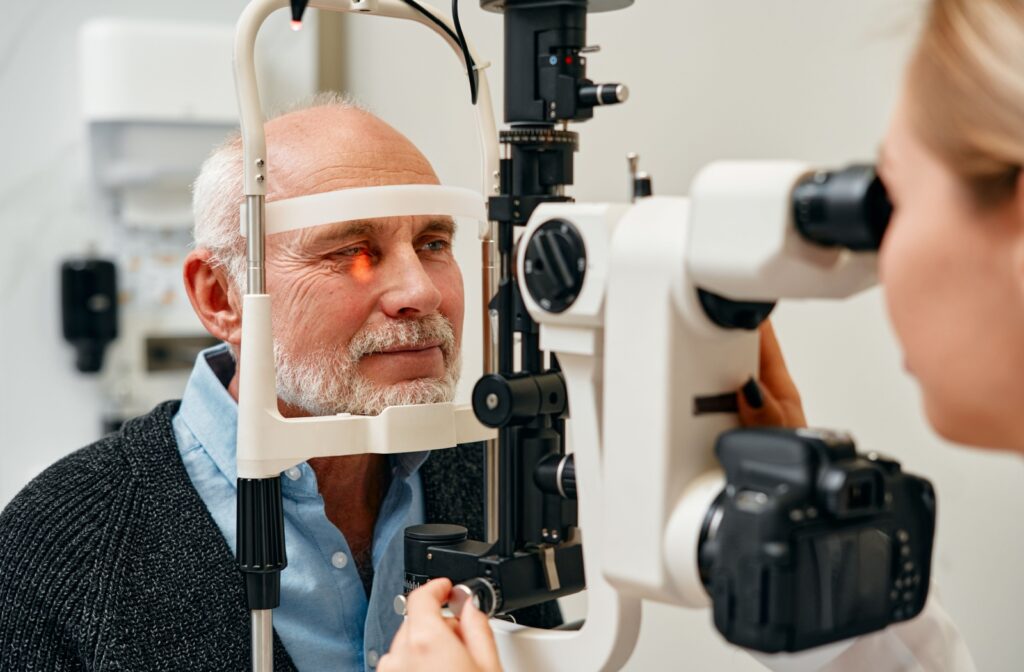Your eyes can tell a story about your overall health, sometimes revealing signs of conditions you might not even suspect. Many people first discover they have diabetes during a routine eye exam, thanks to the ability of optometrists to spot subtle changes in blood vessels and eye structures.
Yes, an eye exam can detect early signs of diabetes and related complications by observing changes in the eye. Regular eye checkups are key to protecting your health, giving you peace of mind and valuable insights about your vision.
The Link Between Diabetes And Eye Health
Diabetes is a chronic condition that impacts your body’s ability to regulate blood sugar levels. Over time, high blood sugar can damage blood vessels throughout the body, including the delicate vessels in the eyes. This damage often increases the risk of developing eye diseases collectively known as diabetic eye disease.
The eye is special because it’s one of the only places where your blood vessels can be viewed directly, giving eye doctors a unique look into your general healing. With a thorough eye exam, your optometrist may notice early signs of diabetes—often before symptoms appear.
What Is Diabetic Retinopathy
Diabetic retinopathy is one of the most common complications of diabetes that affects the eyes. This condition occurs when prolonged high blood sugar damages the tiny blood vessels in the retina, a light-sensitive tissue at the back of the eye.
When these blood vessels become damaged, they can leak blood or fluid, swelling the retina and potentially leading to severe vision loss. The early stages may have no symptoms, making it increasingly important for people with diabetes, or at risk of diabetes, to get regular eye exams. When diabetic retinopathy does show symptoms, they can include:
- Blurry vision
- Floaters
- Cobweb-like streaks
- Difficulty seeing at night
- Loss of central vision
Early detection of diabetic retinopathy can allow your optometrist to recommend effective therapies like medication or laser treatments. Left untreated, this condition can have irreversible effects on eyesight.
Other Diabetic Eye Diseases
While diabetic retinopathy is the most common effect diabetes has on the eyes, it’s far from the only one. Other diabetic eye diseases can include:
Diabetic Macular Edema (DME)
Diabetic macular edema can occur if your diabetic retinopathy is allowed to progress untreated. It happens when fluid builds up in the macula—the part of the retina responsible for sharp, central vision. This swelling can make things like reading or recognizing faces frustrating. Fortunately, DME is treatable if caught early by focusing on slowing its progression and managing symptoms.
Glaucoma
If you have diabetes, your risk of developing glaucoma is higher. Glaucoma is a group of eye conditions that damage the optic nerve, often because of increased pressure in the eye.
The most common type is open-angle glaucoma, which progresses slowly and often doesn’t show symptoms until significant vision loss has already occurred. That’s why early diagnosis is key! Treatments like medications, laser therapy, or surgery could help manage it and protect your eyesight.
Cataracts
Cataracts are the natural clouding of the eye’s lens. People typically begin developing them when the proteins in the lens start breaking down around age 40, but they could show up earlier and progress faster if you have diabetes. High blood sugar can speed up the formation of these cloudy patches, causing hazy or dim vision over time.
Cataracts can make daily activities harder, but don’t worry—they’re very treatable. Surgery to replace the clouded lens with an artificial one is a common procedure and can restore clear vision to make life a whole lot easier.
How An Eye Exam Detects Diabetes
An annual comprehensive eye exam can be more insightful than many realize. Optometrists use advanced tools and techniques to identify diabetes-related changes long before noticeable symptoms arise. These can include:
- Dilated eye exam: By dilating the pupils, optometrists can thoroughly examine the retina and detect any abnormalities, such as leaking or swollen blood vessels, that signal diabetic retinopathy.
- Ophthalmoscopy: This involves using a specialized device to observe the deeper structures of the eye, including the retina, optic nerve, and blood vessels, where signs of diabetes often first appear.
- Optical coherence tomography (OCT): This imaging technology creates detailed, cross-sectional images of the retina to spot thickening or swelling linked to diabetes complications.
- Imaging for blood vessel changes: Tests such as fluorescein angiography highlight the blood vessels in the retina, making it easier to detect structural damage or leaking.
How Often Should You Get An Eye Exam
Regular eye exams are essential for everyone. They allow your optometrist to monitor your vision for any changes and watch for early signs of eye disease. School-aged children under 18 should see their optometrist every year, as should adults over 65. This allows optometrists to detect rapid vision changes before they become a problem.
Some adults can get their eyes checked every 2 years and be fine, but people with diabetes need to take extra steps to monitor and protect their vision. Experts recommend that people with diabetes have a comprehensive eye exam at least once a year. If you’re ever unsure, follow your eye doctor’s recommendations.
Protecting Your Health Starts With Your Eyes
Monitor your health, protect your vision, and detect warning signs early. Your eyes are more than the windows to your soul—they’re a key to understanding your overall health.
At Dr. Jennifer L. Shane & Associates, we pride ourselves on providing comprehensive eye care tailored to your needs. Our diagnostic technology and experienced team are ready to help you get the care you deserve. Whether you’re managing diabetes or want to safeguard your vision, we’re here to help.
Book online today to schedule your eye exam and take the first step toward healthier, clearer vision.



